products categories
- Battery Production Equipment Line
- Battery Lab Pilot Equipment Line
- Lithium Battery Pack Assembly Line
- Solid State Battery Assembly Line
- Sodium Ion Battery Production Line
- Supercapacitor Assembly Line
- Lithium Ion Battery Recycling Plant
- Dry Electrode Preparation Solution
- Perovskite Based Solar Cell Lab Line
- Li ion Battery Materials
- Cathode Active Materials
- Anode Active Materials
- Customized Battery Electrode
- Coin Cell Parts
- Lithium Chip
- Cylindrical Cell Parts
- Battery Current Collectors
- Battery Conductive Materials
- Electrolyte
- Metal Mesh
- Battery Binder
- Separator and Tape
- Aluminum Laminate Film
- Nickel Strip
- Battery Tabs
- Graphene Materials
- Nickel Felt
- Titanium Fiber Felt
- Battery
- Battery Pack Machine & Compoments
- Battery Pack Compoments
- Turnkey Solutions Battery Pack Assembly Line
- Cell Sorter
- Battery Pack Spot Welder
- Laser Welder
- Battery Charging Discharging Tester
- Battery Pack Aging Machine
- Battery Pack Comprehensive Tester
- CCD Visual Inspector
- Battery Pape Sticking Machine
- BMS Testing Machine
- Al Wire Bonding Machine
- Lithium Battery Machine
- Battery Tester & Analyzer
- Battery Safety Tester
- Material Characterization Tester
- Rolling Press Machine
- Spot Welding Machine
- Vacuum Mixer Machine
- Crimping/Disassembling Machine
- Vacuum Sealing Machine
- Electrolyte Filling
- Stacking/Winding Machine
- Electrode Cutter/Slitter
- Pouch Forming Machine
- NMP Solvent Treatment System
- Lithium Battery Production Plant
- Vacuum Glove Box
- Furnaces
- Coaters
- PVD Coater
- Laboratory Press Machine
- Large Press Machine
- Planetary Centrifugal Mixer
- Ball Mill
- Laboratory Machine
- Cutting Machine
- Metal Foam
contact us
- If you have questions, please contact us, all questions will be answered
- WhatsApp : +86 18659217588
- Email : David@tmaxcn.com
- Email : Davidtmaxcn@gmail.com
- Add : No. 39, Xinchang Road, Xinyang, Haicang Dist., Xiamen, Fujian, China (Mainland)
Lab Lithium-ion Battery In-Situ Gassing Volume Analyzer for Battery R&D
Model Number:
TMAX-GVM2200Compliance:
CE CertifiedWarranty:
1 Year limited warranty with lifetime supportMOQ:
1Payment:
L/C D/A D/P T/T Western UnionDelivery Time:
5 days
- WhatsApp : +86 18659217588
- Email : David@tmaxcn.com
- Email : Davidtmaxcn@gmail.com
- Wechat : 18659217588
Previous:
Lab Automatic Voltage Resistance Tester For Lithium-ion Battery R&DNext:
Lab Lithium-ion Battery In-Situ Cell Swelling Analyzer for Battery R&D
Lab Lithium-ion Battery In-Situ Gassing Volume Analyzer for Battery R&D
Lithium-ion battery gassing behaviors
Formation gas production:
The formation process of lithium-ion batteries is accompanied by a large amount of gas production, which is closely related to the cell chemical system, anode and cathode materials, electrolyte components, and formation conditions;
The formation conditions (such as current, cut-off voltage, temperature, pressure, etc.) affects the time of the formation step. Effectively shortening the formation cycle can greatly improve the production efficiency of the enterprise’s battery;
At present, enterprises basically rely on empirical judgment for the setting of the formation process and conditions, and lack scientific and effective means and basis to improve the formation conditions;
Gas production during overcharge:
The risk of overcharge is a very important safety issue in actual use of lithium-ion batteries;
Lithium-ion batteries will have serious side reactions during the overcharging process, and they are often accompanied by a large amount of gas generation, which makes the volume or internal pressure of the battery increase rapidly, increasing the risk of thermal runaway;
Gas production during storage or cycle:
During long-term storage or cycling, lithium-ion batteries will slowly undergo side reactions and produce gas, especially under high temperature conditions, which are more likely to occur. This is a very critical reliability issue for lithium-ion batteries.
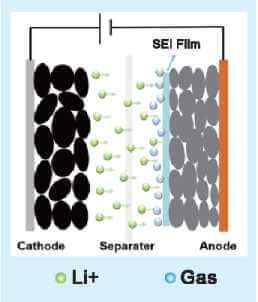
Functions of in-situ gassing volume analyzer
GVM series In-Situ Gas Volume Analyzer adopts high accuracy mechanical monitoring system, which can in-situ record cells’ volume changes in the whole charge-discharge process, and obtain cells' accurate gassing volume and volume change rate during each stage.
*Efficiency improvement: Rapidly evaluate the gassing behavior of cells, shorten R&D period, and improve efficiency;
*Cost down:Help optimize formation process, improve production efficiency and decrease enterprise’s production cost;
*Cell Design Optimization: Quantify the gassing volume and gassing rate during the cells1 whole formation process.
By combining with the three-electrode analysis of formation curve, the systemic evaluation on the influences of different design factors on cells formation can be implemented, and help to optimize the cell performance by improving the SEI formation.
*Reliability & Safety Design: In Situ gas volume monitor can also study and analyze the gassing behavior during the abuse test of overcharge, high temperature cycles and so on.
Traditional test method
Ex-Situ Volume Measurement:
The method of displacement volume has been widely used to measure cells' volume after gassing. It is easy to operate but only provide limited information:
*Single point measuring: unable to acquire the of volume change and gassing rate of the cells9 whole formation process;
*Non-in-situ measuring: easy to be interfered, by external environment during the transfer-measurement process;
*Weighed by General balance: unable to achieve an online, long-term, stable, and high-accuracy measurement.
*High waste Of cells: unable to remove the influence of cell consistency.
Internal Pressure Measurement
The Internal Pressure Measurement is another widely used method, which monitor the internal pressure change of cells by implanting a pressure senor device into the cell. This method can be only applied on the prismatic cells, and need to prepare special cell sample, thus is complicated on operation and high cost consuming.
Creative solution
ln-situ measurement:
With a self-developed high—accuracy mechanical sensing system installed in GVM series in situ gas volume monitor, we can implement a continuously long-term & high—stability measurement of Lithium Ion Batteries gassing process; High accuracy ADC data acquisition module is applied, and coordinated with multi-functional in situ gas volume monitor software MISG. The volume changes during the charge—discharge process of lithium ion battery can be monitored in real-time, and present the swelling and shrinkage level of battery online. Through CAN based communication data, it* s convenient to implement multi—module swelling.
GVM series are the first in-situ gas volume monitors in lithium Ion battery Industry.
*Developed with CATL the top power battery company and authorized exclusively for the patent.
Device constitutional diagram and software

High-energy learning test system: long-term in-situ online monitoring, and meet the accuracy requirements;
Dedicated test software: real-time collection and display of mechanical test system data, and automatically draw volume change curves;
Auxiliary system: special structure design, convenient to intervene in supporting auxiliary system, realize test temperature adjustment control.
Applications
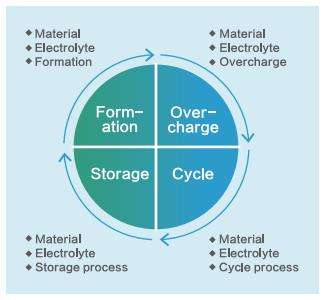
Formation-gassing analyze
1.Different materials’ formation-gassing application
Test condition: 25℃ 0.04C/0.1C
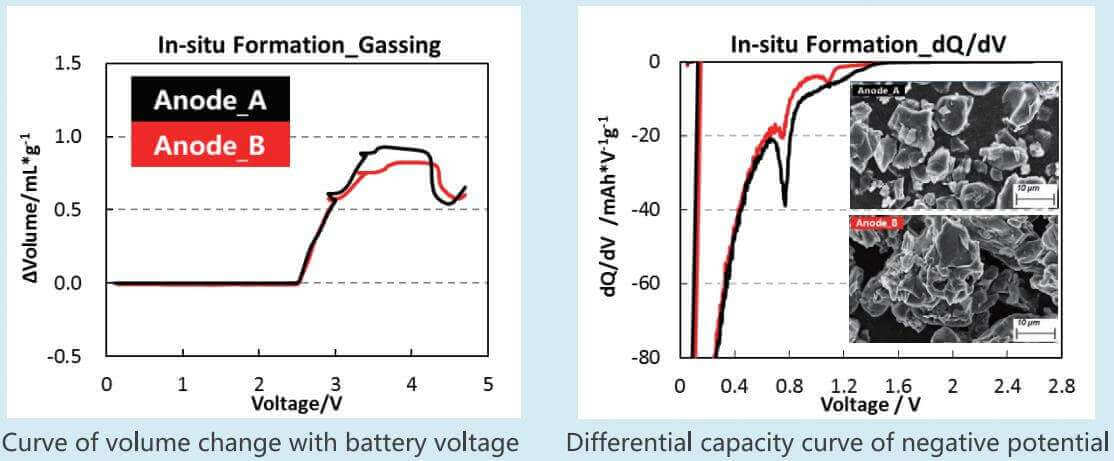
The modified material A has a smaller particle size than the conventional material B, and the SEI film formation reaction is more sufficient during formation, and the gas production is larger;
With the same design parameters, only the modification and surface modification of the material are performed. By comparing the gas production and gas production rate of the cell formation, the effect of the processed material on the cell formation can be quickly and intuitively obtained, helping the development and improvement of new materials.
2.Different electrolyte’s formation-gassing application(test condition: 25℃ 0.02℃)

In the same electrolyte, the cell formation gas production and gas production rate of electrolyte B with a certain additive are greater than those of electrolyte A without additives. This additive can make the cell film forming reaction more complete;
The additives in the electrolyte have a great influence on the SEI film formation reaction of the cell formation stage. By comparing the changes in the gas production volume and gas production rate of the cell formation by the electrolyte with different additives, the effect of the additive on the cell formation is quickly evaluated. The influence of the formation process, combined with the three-electrode formation curve, helps to improve the electrolyte formulation in a targeted manner.
3.Different temperature and rate of formation conditions
Formation under different temperature
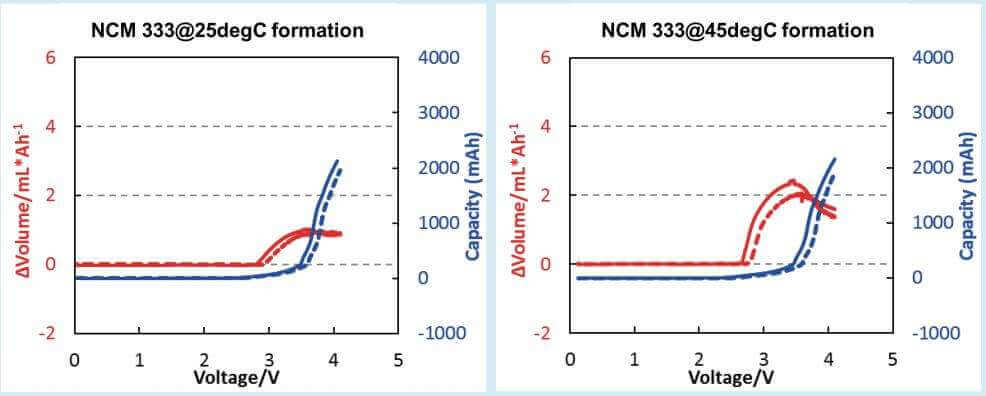
In the same formation process, SEI filming reaction is more adequate at high temperature of 45deqC compared to that of 25degC.
Formation under different charge rate
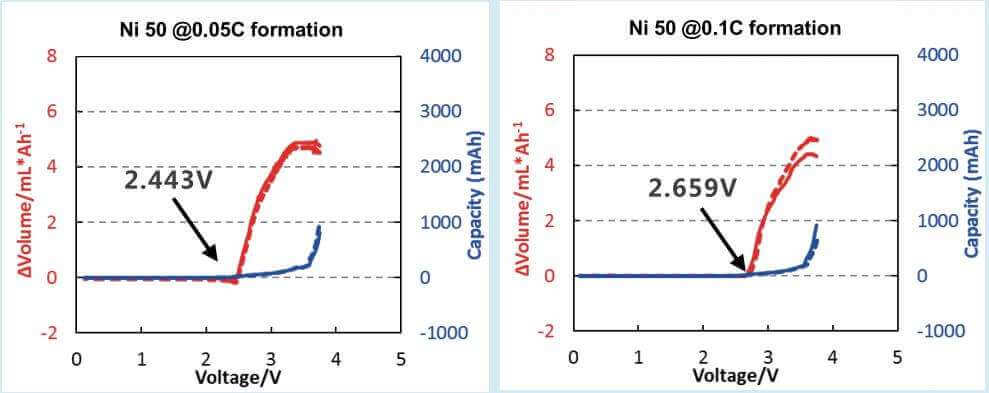
At the same temperature^ with different formation rate, the reaction starting point of formation voltage is lower in smaller rate.
The setting of the cell formation condition parameters affects the cell formation time and film quality. Effectively shortening the cell formation time can greatly improve the cell production efficiency of the enterprise. By setting parameters of different formation conditions, the starting point of the gas production voltage of the cell under different formation conditions and the gas production and gas production rate at each stage of the formation are obtained quantitatively, which helps guide the improvement of the cell formation process and technology, and improves the production efficiency of the enterprise .
Overcharge-gassing analyze
1.Different NCM materials’ overcharge-gassing application(test condition: 25℃ 0.5℃)

Comparing the cell SOC during gas production, it can be found that the high nickel cell produces gas earlier;
By monitoring the normal charging process of the battery cell and the volume and temperature changes of overcharged to 200% SOC, and corresponding to the three-electrode curve, the potential and reaction rate of a large number of side reactions, the overcharged lithium potential, and the positive electrode material decomposition potential can be accurately obtained And rate and other related information, quantitatively help analyze and study the overcharge performance of materials, make targeted improvements, and improve R&D efficiency.
2.Different NCM materials’ overcharge-gassing application(test condition: 25℃ 0.5℃)
*In the normal voltage range, the volume change of the cell is less than 1.2%, which is basically due to the structural swelling caused by lithium intercalation. When the SOC of high Ni-2 is greater than 40%, the structural swelling of high Ni-1 is slightly greater than that of high Ni-2;
*After overcharging to 5V, the SOC of high Ni-2 material is later than that of high Ni-1 material, which indicates that high Ni-2 material can adapt to higher charging voltage, release more capacity and improve the energy density of the cell while maintaining stable structure;
*The SOC and voltage of the cell corresponding to the starting point of gas production can be obtained by using the in-situ method to continuously monitor the overcharge gas production behavior; which is conducive to the development of the next step of R&.D work
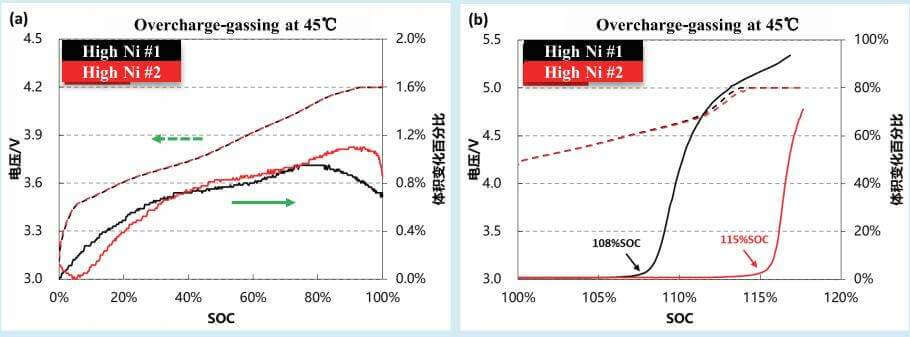
3.Types and contents of electrolyte additives

Comparing the overcharge gassing behavior of lithium-ion cell with two different types and contents of additives, it can be found that the reaction potential of additive-A is lower than that of additive-B, and the total gassing is lower a little more, it can be better used as overcharge protection additive.
Cycle-gassing analyze
Different NCM materials’ overcharge-gassing application(test condition: 60℃ 0.5℃ 3-4.2V)

*Cell A and Cell B were used different ternary materials, the cell volume of cell-B increased more than that of cell A, and the irreversible volume increased from 0.01 ml to 0.04 ml;
*Quantitative analysis helps to analyze the cycle performance of different materials, improving the efficiency of research and development.
Storage-gassing analyze
1.Comparing NCM811 modified conditions
Test condition: 4.2V full charge at 85℃ for 4H
The results show that the voltage drop of NCM811 in modified method-1 is larger than that in modified mothod-2 at 85 °C, and the gas production is more ;
The in-situ method can be used to continuously monitor the storage gas production behavior; which can compare the advantages of different modification methods of materials, improving the efficiency of research and development.
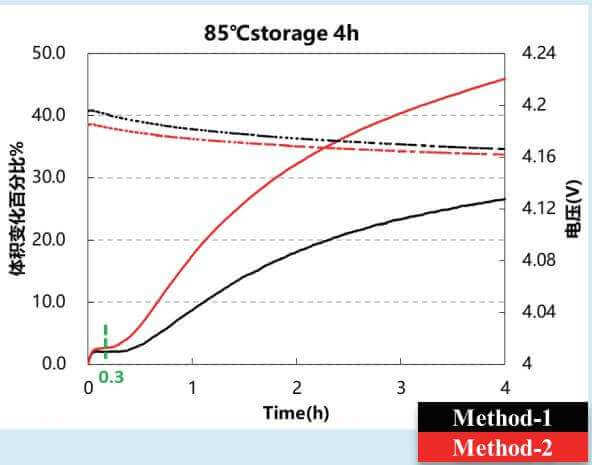
2.Comparing different type of electrode
Test condition: 4.2V full charge at 85℃ for 4H
*A and B of cells adopt different electrolyte systems. From the cell volume change curve during full charge storage, it can be seen that EL-A cells produce more gas than EL-B cells, which indicates that the electrolyte of system is easy to produce gas under high temperature and high pressure;
*Quantitative analysis can help to study the gas production performance of different electrolytes, and improving the efficiency of research and development.
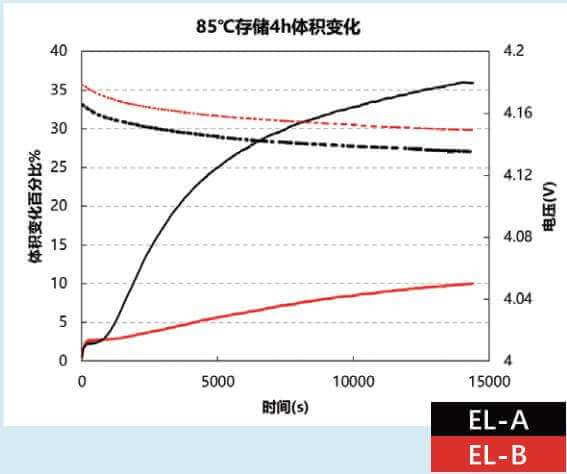
3.Comparing different storage temperature
Test condition: 4.2V full charge at 85℃ for 4H
The cell has good storage performance at 70 °C and high gas production at 85 °C ;
By using in situ method to continuously monitor the storage gas production behavior, the starting point and maximum point of gas production can be obtained, which is helpful for the R & D personnel to carry out the next step of R & D work.
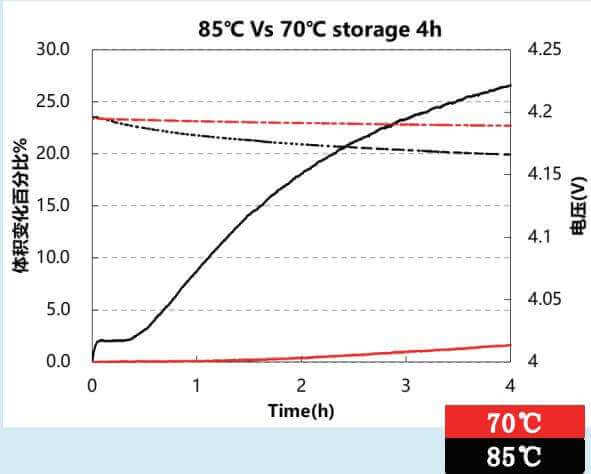
Parameter and installation requirement
Parameters
1.Total weight of pouch cell to be tested: IO-IOOOg, maximum size(excluding tabs, as shown on the below): 180*120 mm
2.Cell test temperature: 20-85℃
3.Resolution of volume change: <1pL
4.Detection accuracy of volume change: <1OpL
5.System stability <20pL(RT25℃, <30min), <50uL(RT25℃, 30min-12h)
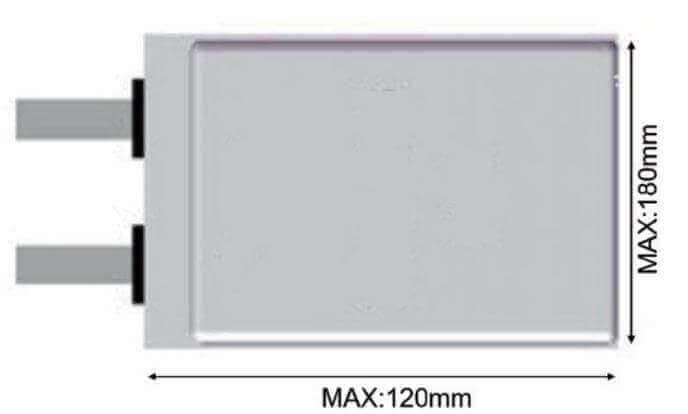
Installation requirements of host device |
|
Desk |
Balance table |
Battery soaking liquid |
Mineral oil(like silicone oil) |
Voltage |
200-240V/50-60Hz |
Voltage variation tolerance |
±10% |
Power dissipation |
150W(GVM2100), 280W(GVM2200) |
Environment temperature |
25±5℃ |
Environmental humidity |
Humidity<95%RH at the temperature of 40℃ |
Environmental magnetic field |
Keep away from intense electromagnetic fields |
Net weight |
55kg(GVM2100), 60kg(GVM2200) |
Dimension |
500*500*700 mm |
Auxiliary device |
|
Charge-discharge device |
Self-supply or provided by supplier |
Computer |
Self-supply or provided by supplier |
Model |
GVM2100 |
GVM2200 |
Number of channels |
Single channel(one pouch cell) |
Dual channel(two pouch cells) |

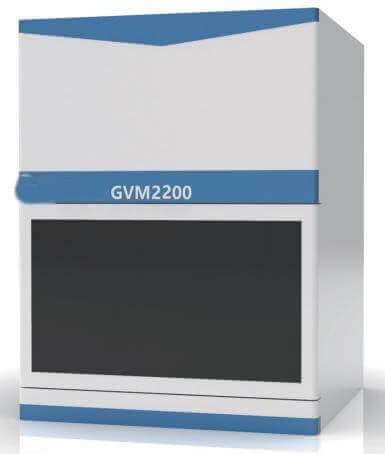

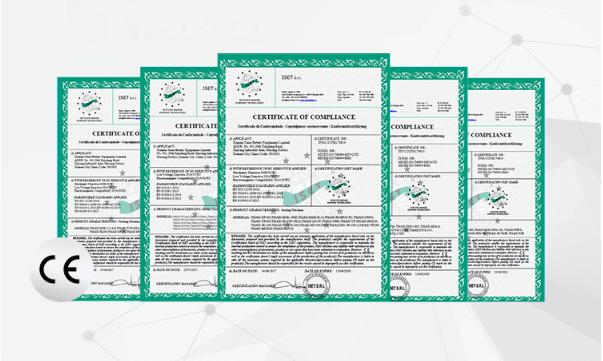


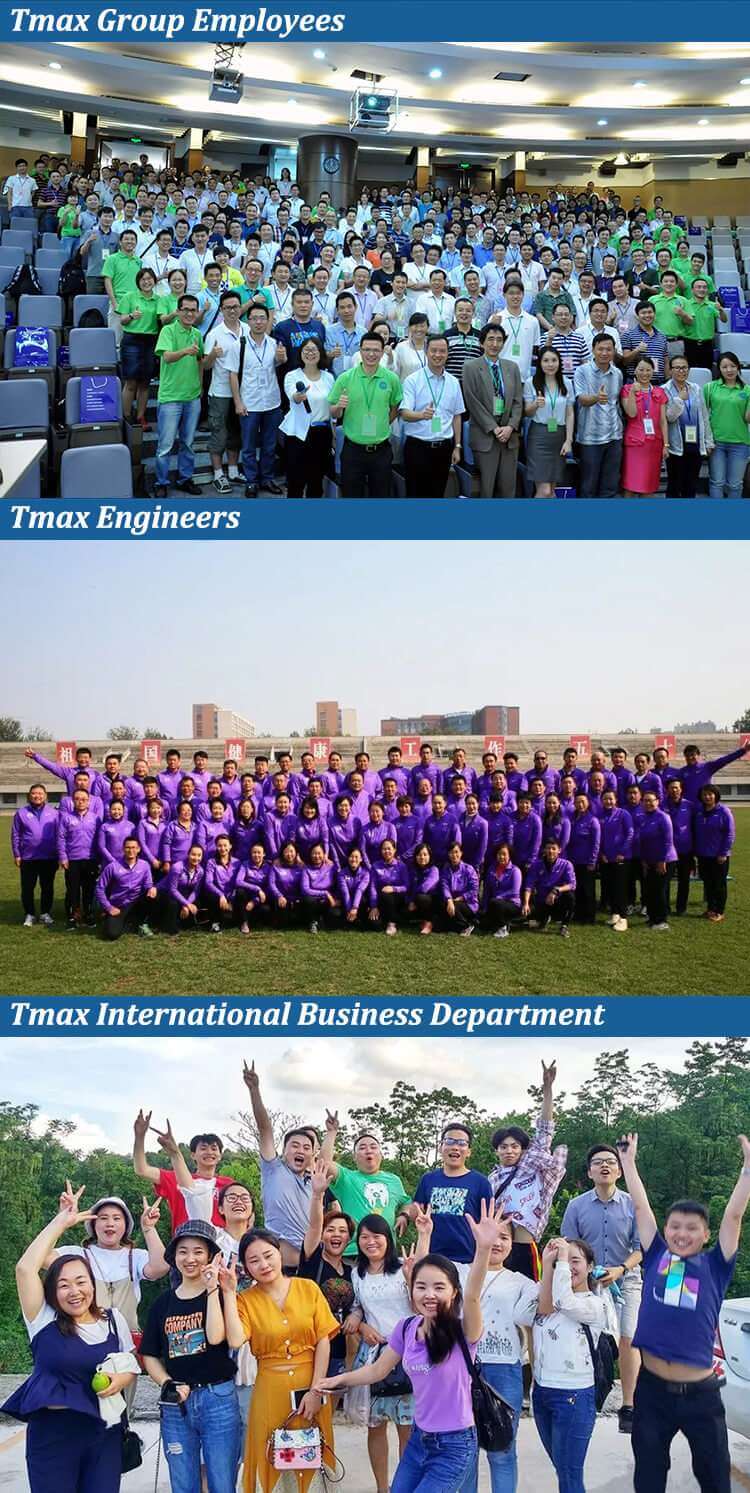
 English▼
English▼




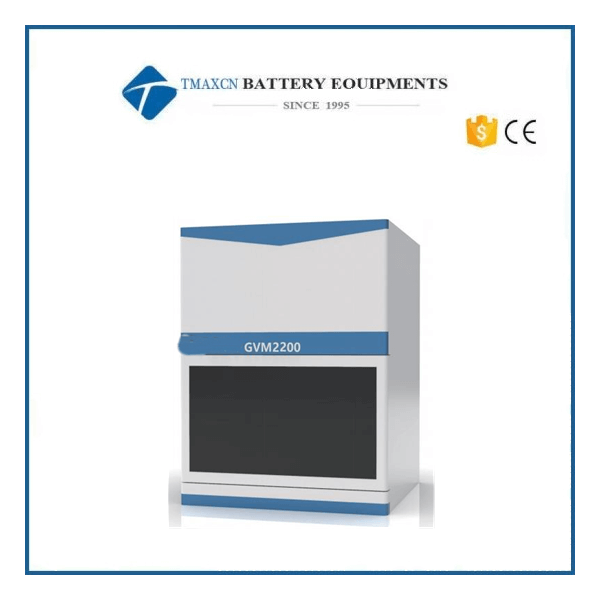
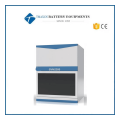

 +86 13174506016
+86 13174506016 David@tmaxcn.com
David@tmaxcn.com

